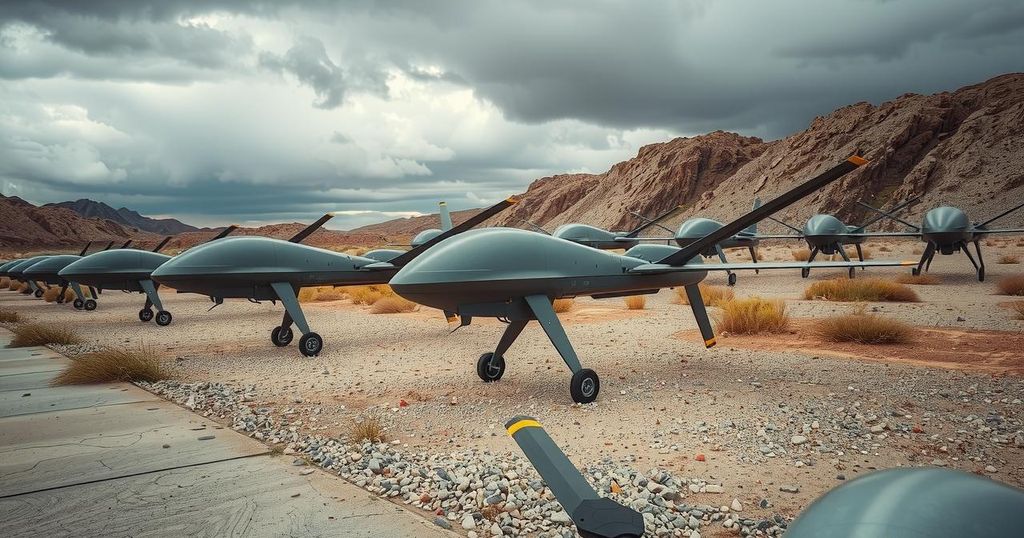North Korea is ramping up drone production for export to U.S. adversaries like Iran and Russia, despite sanctions. Kim Jong Un has prioritized full-scale production, while the country employs evasive tactics for shipping and financial transactions. The potential technological capabilities of the drones and international responses remain unclear.
North Korea is reportedly preparing to export military drones to various U.S. adversaries, including Iran and its associated forces, as detailed in a recent report. Notably, despite longstanding international sanctions aimed at limiting its armament production, Pyongyang is increasing its military drone output. The news agency Newsweek sought comments from the North Korean embassy in China but received no response due to after-hours inquiries.
Significantly, North Korean leader Kim Jong Un directed his government to initiate “full-scale production as soon as possible” in November, aiming to enhance relations with its limited allies for foreign currency income. Pyongyang has also exhibited advanced tactics to bypass international sanctions that are intended to restrict its nuclear and ballistic missile initiatives. A key recipient of these drones is alleged to be Russia, which has reportedly obtained substantial North Korean munitions to aid its offensive in Ukraine.
On March 7, inspection procedures for the drones were reportedly initiated at North Korean facilities, with prompt shipments scheduled for those that pass evaluation, confirmed a high-ranking official to Seoul’s Daily NK media. Export destinations are anticipated to include allies such as Iran and Syria, alongside non-state actors like the Houthi rebels in Yemen and militant organizations throughout Africa, alongside potential deliveries to Russia.
The drones are manufactured in North Pyongan Province, encompassing reconnaissance and loitering suicide drones. To maintain secrecy concerning its operations, North Korea plans to disperse UAV components across different shipping routes to facilitate assembly upon arrival—an established practice in previous weapon export efforts. Moreover, the regime favors cryptocurrency transactions to obfuscate financial trails and employs front companies internationally to complicate payment schemes further.
Commentary from Vann Van Diepen, a former U.S. State Department expert on weapons of mass destruction, highlights uncertainty surrounding North Korea’s drone pricing strategy against competing non-Western suppliers. Questions remain over whether North Korea’s offerings, specifically the Saetbyol-4 and -9 drones, will be sufficiently technologically advanced to justify their pricing.
It remains uncertain how the United Nations and regional enforcement agencies will respond to these drone shipments. The decline in monitoring measures from Russia, a permanent member of the U.N. Security Council, may significantly undermine enforcement of sanctions, potentially allowing North Korea greater freedom in its arms exportation.
In conclusion, North Korea’s preparations to export military drones represent a significant escalation in its efforts to strengthen ties with adversaries while bypassing international sanctions. Producing increasingly advanced drones, Pyongyang’s tactics to evade detection and scrutiny could dangerously expand its arms trade, particularly with allies such as Iran and Russia. With uncertain responses from international enforcement bodies, this situation warrants continued vigilance.
Original Source: www.newsweek.com






